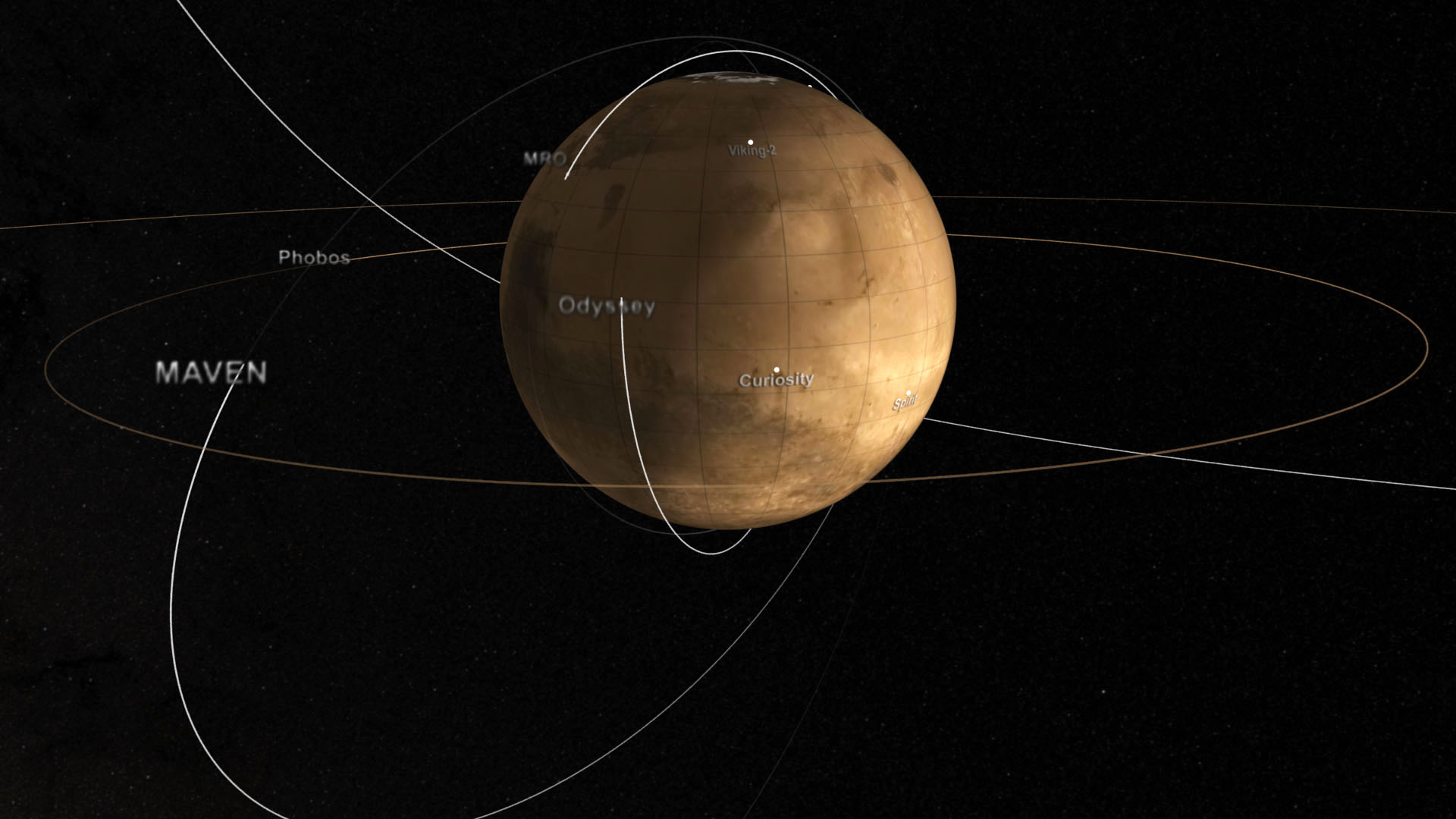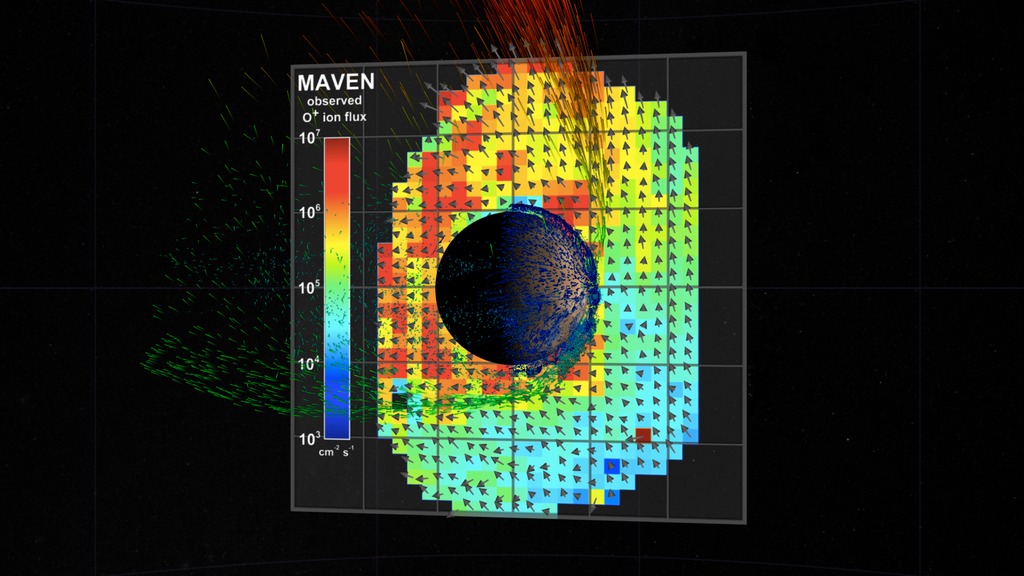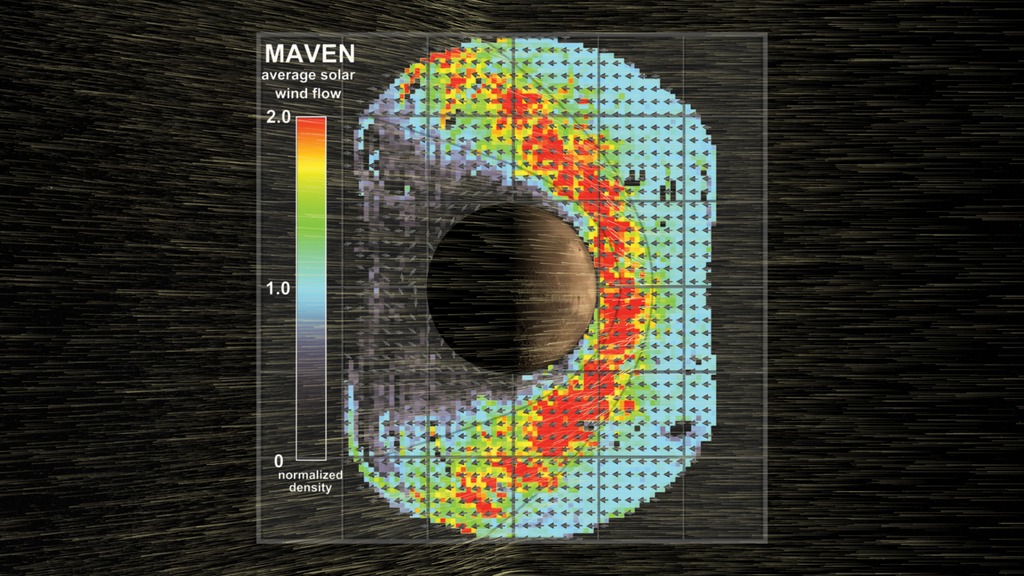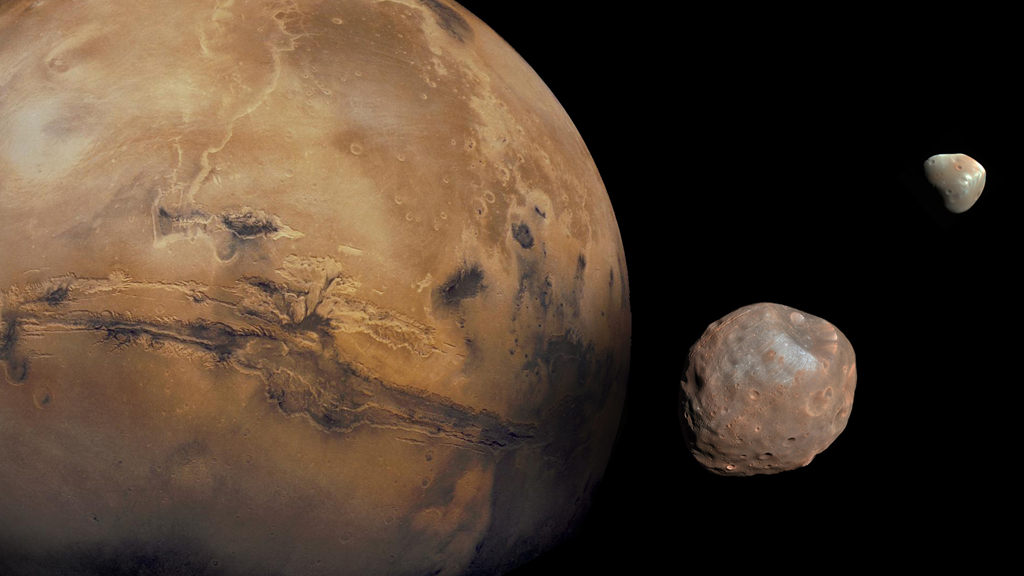Phobos Electric Charging
The interaction of the solar wind with the Martian moon Phobos creates a complex electrical environment that could impact future exploration. Complete transcript available.
Watch this video on the NASA Goddard YouTube channel.
Music provided by Killer Tracks: "Innovations" by Pascal Lengagne
Mars has two moons, Phobos and Deimos. Both are small, airless bodies with irregular shapes. Because they lack protective atmospheres and magnetospheres, Phobos and Deimos are directly exposed to the solar wind for part of their orbits. The solar wind is a stream of electrically charged particles constantly blowing off the surface of the sun at about a million miles per hour; as it collides with the moons, it is thought to create complex electrical environments.
Now, a simulation by William Farrell of NASA's Goddard Space Flight Center has revealed the details of Phobos's interaction with the solar wind. The simulation predicts that static electric charging occurs on the night side of Phobos and within its shadowed craters. Phobos is frequently cited as a target for future exploration, but according to the study, any robots or humans roving around the night side could build up static electric charge that might affect sensitive equipment. Mission planners will have to face this challenge as they set their sights on the moons of Mars.
Learn more about the finding from NASA or read the science paper by Farrell et al.
Graphic of Mars and its moons.
Approach to Phobos.
Electrical field around Phobos.
Graphic of solar wind components.
Electrical field around Stickney crater.
Future rover on the surface of Phobos.
For More Information
See the following sources:
Credits
Please give credit for this item to:
NASA's Goddard Space Flight Center Conceptual Image Lab
-
Animators
- Michael Lentz (USRA)
- Krystofer Kim (USRA)
-
Producer
- Dan Gallagher (USRA)
-
Scientist
- William Farrell (NASA/GSFC)
-
Science writer
- William Steigerwald (NASA/GSFC)
-
Artistic director
- Michael Lentz (USRA)
-
Narrator
- Dan Gallagher (USRA)
-
Project support
- Ernie Wright (USRA)
-
Technical support
- Aaron E. Lepsch (ADNET Systems, Inc.)
Release date
This page was originally published on Wednesday, October 18, 2017.
This page was last updated on Wednesday, May 3, 2023 at 1:47 PM EDT.
![Music credit: "Neighborhood Conspiracy" by Brice Davoli [SACEM]; Koka Media [SACEM], Universal Publishing Production Music (France) [SACEM]; Killer Tracks Production MusicWatch this video on the NASA Goddard YouTube channel.](/vis/a010000/a011900/a011946/hubble_phobos_thumbnail.png)




